- Clone
- 15-2 (See other available formats)
- Regulatory Status
- RUO
- Other Names
- MMR (macrophage mannose receptor), MR (mannose receptor), CD206, MRC1
- Isotype
- Mouse IgG1, κ
- Ave. Rating
- Submit a Review
- Product Citations
- publications
Macrophage mannose receptor (MMR) is a 162-175 kD type I membrane protein also known as CD206, MRC1, or mannose receptor (MR). It is a pattern recognition receptor (PRR) that belongs to C-type lectin superfamily. MMR is expressed on macrophages, dendritic cells, and hepatic or lymphatic endothelial cells, but not on monocytes. MMR recognizes a range of microbial carbohydrates bearing mannose, fucose, or N-acetyl glucosamine. MMR mediates endocytosis and phagocytosis, induces activation of macrophages and antigen presentation, plays an important role in host defense, and provides a link between innate and adaptive immunity.
Product DetailsProduct Details
- Verified Reactivity
- Human
- Antibody Type
- Monoclonal
- Host Species
- Mouse
- Immunogen
- Purified human mannose receptor
- Formulation
- Phosphate-buffered solution, pH 7.2, containing 0.09% sodium azide
- Preparation
- The antibody was purified by affinity chromatography and conjugated with Spark Blue™ 574 under optimal conditions.
- Concentration
- 0.2 mg/mL
- Storage & Handling
- The antibody solution should be stored undiluted between 2°C and 8°C, and protected from prolonged exposure to light. Do not freeze.
- Application
-
FC
- Recommended Usage
-
Flexi-Fluors™ are provided at a standard 0.2 mg/mL concentration. We recommend titrating this reagent to determine the optimal concentration for each application. For many flow cytometry applications, conjugated antibodies perform well at concentrations ranging from 0.03 to 1.0 µg per million cells in 100 µL. We recommend testing a range of concentrations starting from 10 µg/mL.
For example, make five 1:1 serial dilutions of the 0.2 mg/mL antibody. Add 5 µL of each dilution (including the undiluted antibody) to 100 µL of cells (at 107 cells/mL) to test six concentrations -- 1.0, 0.5, 0.25, 0.125, 0.06, and 0.03 µg per million cells in 100 µL volume. Compare staining patterns or create a titration curve using the MFI or staining index to determine the optimal concentration.
* Spark Blue™ 574 has a maximum excitation of 506 nm and a maximum emission of 574 nm. - Excitation Laser
-
Blue Laser (488 nm)
- Application Notes
-
The 15-2 antibody blocks the interaction of MMR with its ligand, and inhibits mannose receptor-mediated degradation of t-PA by macrophages. Additional reported applications of this antibody (for the relevant formats) include: Western blotting1, blocking of ligand binding1,2, immunofluorescence3, and immunohistochemical staining of acetone-fixed frozen tissue sections1. The Utra-LEAF™ purified antibody (Endotoxin < 0.01 EU/µg, Azide-Free, 0.2 µm filtered) is recommended for functional assays (Cat. No. 321149 and 321150).
- Additional Product Notes
-
For more information about Flexi-Fluors™, visit our Flexi-Fluor™ page and review FAQs associated with this product line.
-
Application References
(PubMed link indicates BioLegend citation) -
- Noorman F, et al. 1997. J. Leukocyte Biol. 61:63. (WB, IHC, Block)
- Barrett-Bergshoeff M, et al. 1997. Thromb Haemost. 77:718. (Block)
- Kato M, et al. 2007. J. Immunol. 179:6052. (IF)
- RRID
-
AB_3662484 (BioLegend Cat. No. 285144)
Antigen Details
- Structure
- Type I membrane protein, Pattern Recognition Receptor (PRR) family, C-type lectin superfamily, 162-175 kD
- Distribution
-
Macrophages, dendritic cells, hepatic and lymphatic endothelial cells
- Function
- Pathogen binding, facilitate phagocytosis and endocytosis, macrophage activation and antigen presentation
- Ligand/Receptor
- Mannose, fucose, N-acetyl glucosamine
- Cell Type
- Dendritic cells, Endothelial cells, Macrophages
- Biology Area
- Cell Biology, Immunology, Neuroscience, Neuroscience Cell Markers
- Molecular Family
- CD Molecules
- Antigen References
-
1. Mason D, et al. Eds. 2002. Leukocyte Typing VII. Oxford University Press. p303
2. Wileman TE, et al. 1986. P. Natl. Acad. Sci. USA 83:2501.
3. Apostolopoulos V and McKenzie IF. 2001. Curr. Mol. Med. 1:469.
4. Le Cabec V, et al. 2005. J. Leukocyte Biol. 77:934.
5. Barrett-Bergshoeff M, et al. 1997. Thromb. Haemostatis 77:718. - Gene ID
- NA
- UniProt
- View information about CD206 on UniProt.org
Related Pages & Pathways
Pages
Related FAQs
- What are Flexi-Fluors?
-
Flexi-Fluors are rapidly made-to-order conjugated antibodies. The technology, manufacturing processes, and specifications used to create Flexi-Fluors are the same as our regular catalog products. However, the optimal concentration and performance of each Flexi-Fluor must be determined by the customer.
- How quickly will I receive my order?
-
We aim to ship Flexi-Fluors within 2-3 weeks of receipt of your order. However, depending on your location, shipping times may vary.
- How are Flexi-Fluors different from regular catalog products?
-
Flexi-Fluors are made on demand, specifically for you. Flexi-Fluors are manufactured using the same high-quality standards, and specifications as other catalog products. For faster delivery, Flexi-Fluors are not tested by flow cytometry to determine optimal concentrations or evaluate performance. This testing needs to be performed by the customer.
- How do I determine the optimal concentration for using my Flexi-Fluor? How should I titrate my antibody?
-
Flexi-Fluors are provided at a standard 0.2 mg/mL concentration. We recommend that you titrate your antibody to determine the optimal concentration to use for your application. For many flow cytometry applications, conjugated antibodies perform well at concentrations ranging from 0.03 to 1.0 µg per million cells in 100 µL volume. We recommend that you test a range of concentrations starting from 10 µg/mL.
For example, make five 1:1 serial dilutions of your 0.2 mg/mL antibody. Add 5 µL of each dilution (including the undiluted antibody) to 100 µL of cells (at 107 cells/ml) to test six concentrations - 1.0, 0.5, 0.25, 0.125, 0.06, and 0.03 µg per million cells in 100 µL volume. Compare staining patterns or create a titration curve using the MFI or staining index to determine the optimal concentration.
- I can’t find the antibody-dye combination that I need. When will it be available?
-
We continuously update our catalog, introducing scores of new products every month. Please get in touch with our Technical Service team for an update on new products or recommendations for suitable alternatives to complete your panel. Or contact Custom Solutions to inquire about our affordable custom conjugation services.
- I need help to validate the performance of my Flexi-Fluor. Who should I contact?
-
Please get in touch with Technical Service for assistance.
- Can I order more than 50 μg of a Flexi-Fluor?
-
Yes, you can order multiple vials of the same Flexi-Fluor products. We cannot guarantee, however, that these vials will be bottled from the same lot. For bulk single-lot orders, contact our Custom Solutions team.
- What is the expiration date of my Flexi-Fluor?
-
Expiration dates can be found on the vial label or by using our CoA lookup tool.
Other Formats
View All CD206 Reagents Request Custom ConjugationCompare Data Across All Formats
This data display is provided for general comparisons between formats.
Your actual data may vary due to variations in samples, target cells, instruments and their settings, staining conditions, and other factors.
If you need assistance with selecting the best format contact our expert technical support team.
-
Purified anti-human CD206 (MMR)
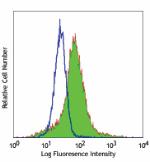
GM-CSF-stimulated (day-3) human monocytes stained with purif... -
FITC anti-human CD206 (MMR)

GM-CSF stimulated (day3) human peripheral blood monocytes st... -
PE anti-human CD206 (MMR)
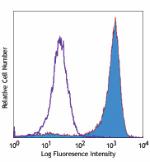
GM-CSF-stimulated (day-3) human monocytes stained with 15-2 ... -
PE/Cyanine5 anti-human CD206 (MMR)
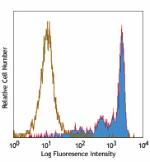
GM-CSF-stimulated human peripheral blood monocytes (day-3) s... -
APC anti-human CD206 (MMR)
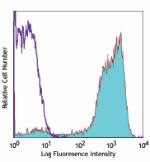
GM-CSF- stimulated (day-3) human monocytes stained with 15-2... -
Alexa Fluor® 488 anti-human CD206 (MMR)
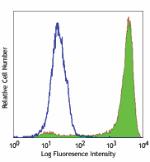
GM-CSF-stimulated (day-3) human monocytes stained with 15-2 ... -
Alexa Fluor® 647 anti-human CD206 (MMR)
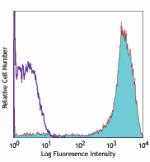
GM-CSF-stimulated (day-3) human monocytes stained with 15-2 ... -
Biotin anti-human CD206 (MMR)
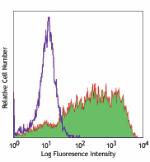
GM-CSF-stimulated human peripheral blood monocytes (day-3) s... -
APC/Cyanine7 anti-human CD206 (MMR)
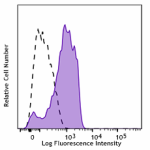
GM-CSF-stimulated (6 days) human peripheral blood monocytes ... -
PerCP/Cyanine5.5 anti-human CD206 (MMR)
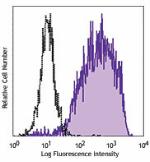
GM-CSF-stimulated (3 days) human peripheral blood monocytes ... -
PE/Cyanine7 anti-human CD206 (MMR)
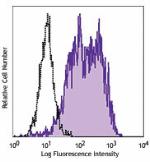
GM-CSF-stimulated (3 days) human peripheral blood monocytes ... -
Brilliant Violet 421™ anti-human CD206 (MMR)

GM-CSF-stimulated (3 days) human peripheral blood monocytes ... -
Purified anti-human CD206 (MMR) (Maxpar® Ready)
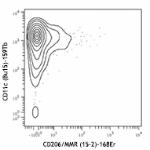
Human PBMCs were incubated for 3 days in media alone (top) o... 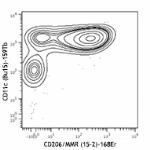
-
Alexa Fluor® 700 anti-human CD206 (MMR)
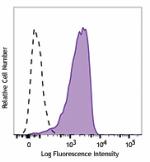
GM-CSF-stimulated (3 days) human peripheral blood monocytes ... -
PE/Dazzle™ 594 anti-human CD206 (MMR)
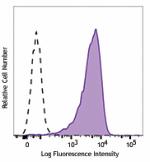
GM-CSF-stimulated (3 days) human peripheral blood monocytes ... -
APC/Fire™ 750 anti-human CD206 (MMR)

GM-CSF-stimulated (3 days) human peripheral blood monocytes ... -
Brilliant Violet 711™ anti-human CD206 (MMR)
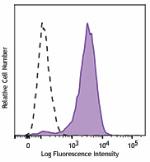
GM-CSF-stimulated (3 days) human peripheral blood monocytes ... -
Brilliant Violet 510™ anti-human CD206 (MMR)
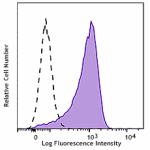
GM-CSF stimulated (3 days) human peripheral blood monocytes ... -
Brilliant Violet 605™ anti-human CD206 (MMR)
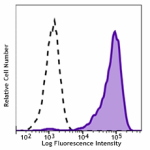
GM-CSF induced human monocytes (3 days) were stained with CD... -
Brilliant Violet 785™ anti-human CD206 (MMR)
-
TotalSeq™-A0205 anti-human CD206 (MMR)
-
TotalSeq™-B0205 anti-human CD206 (MMR)
-
TotalSeq™-C0205 anti-human CD206 (MMR)
-
Ultra-LEAF™ Purified anti-human CD206 (MMR)

GM-CSF-stimulated (day-3) human monocytes stained with purif... -
Pacific Blue™ anti-human CD206 (MMR)
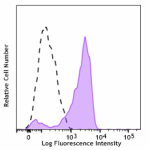
Human peripheral blood monocytes were stimulated with GM-CSF... -
PE/Fire™ 700 anti-human CD206 (MMR)
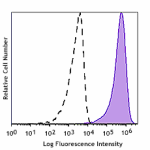
GM-CSF stimulated (3 days) human peripheral blood monocytes ... -
TotalSeq™-D0205 anti-human CD206 (MMR)
-
Spark NIR™ 685 anti-human CD206 (MMR)

GM-CSF stimulated (3 days) human peripheral blood monocytes ... -
Spark Red™ 718 anti-human CD206 (MMR) (Flexi-Fluor™)
-
Brilliant Violet 650™ anti-human CD206 (MMR)

GM-CSF stimulated (3 days) human peripheral blood mononuclea... 
GM-CSF stimulated (3 days) human peripheral blood mononuclea... -
Spark Blue™ 574 anti-human CD206 (MMR) (Flexi-Fluor™)
-
Spark Blue™ 550 anti-human CD206 (MMR) (Flexi-Fluor™)
 Login / Register
Login / Register 













Follow Us